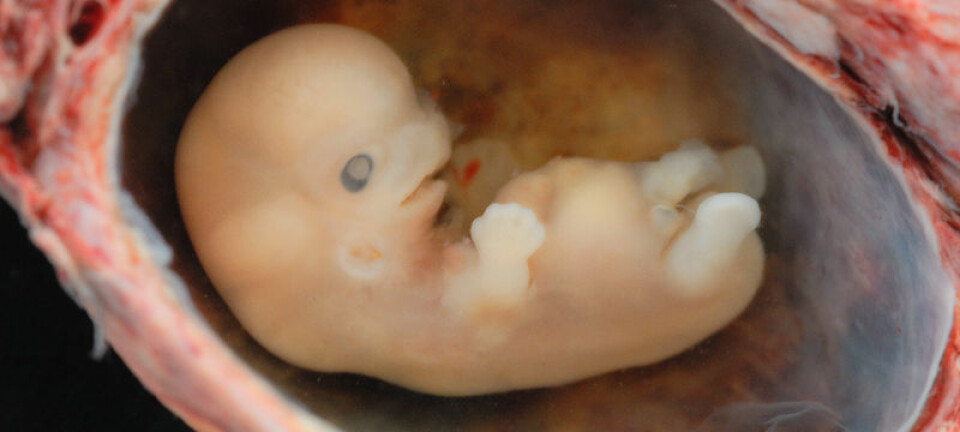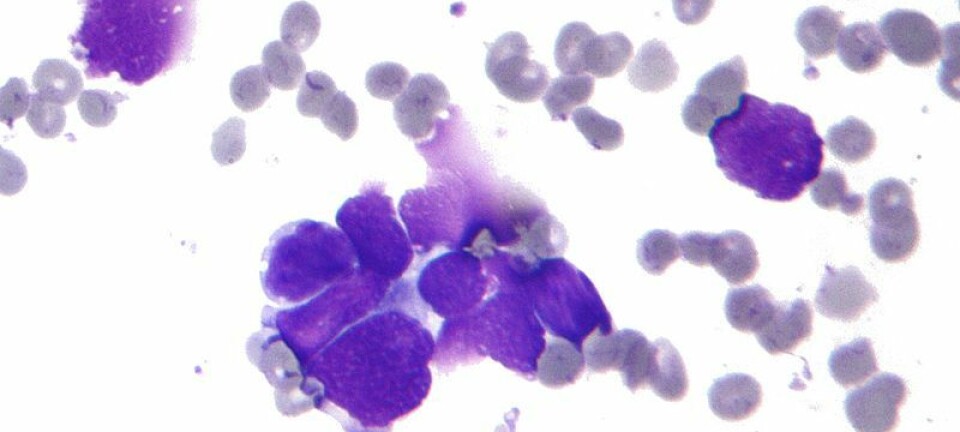
Stressed foetal cells harbour hope for cancer treatment
The body’s cells have a mechanism that helps them attain perfect cell division. Cancer cells also use these mechanisms, but scientists are now trying to prevent them from doing so.
When the body’s cells divide rapidly, for instance during embryonic development, they are subjected to tremendous stress, which in some cases may cause serious damage to the unborn child.
However, the body’s cells have a multitude of defence mechanisms that perform quality checks, even when things are going really fast – which is why serious diseases are relatively rare.
Unfortunately, foetal cells are not the only cells in our bodies that make use of these mechanisms. Cancer cells do so too.
The mechanisms responsible for the cells’ quality checks have now become the subject of a major research project involving Danish and Italian scientists.
Cancer relies on the innate ability of the body’s cells to copy DNA quickly and accurately, otherwise the cells are destroyed. We therefore want to identify substances that can target these mechanisms and hopefully make cancer cells more sensitive and easier to destroy.
The head of the new project, Professor Jiri Bartek of the Danish Cancer Society, explains:
”Cancer relies on the innate ability of the body’s cells to copy DNA quickly and accurately, otherwise the cells are destroyed. We therefore want to identify substances that can target these mechanisms and hopefully make cancer cells more sensitive and easier to destroy.”
Stress: the cell copies three billion building blocks
The key objective of new project is to improve our understanding of the mechanisms that cells use when under replication stress – i.e. when they are dividing rapidly.
When a cell divides, it needs to make an exact copy of three billion nucleotides, which are the building blocks of our DNA.
This process is particularly quick during embryonic development, when the cell only has a few hours to copy the entire DNA. Here, errors in the copying process may result in the unborn child developing e.g. nerve damage, a damaged immune system or premature ageing.
It is probably fair to assume that something as important as the mechanism that controls cell division would be relatively well preserved in all organisms. In this way, the genes in yeast may help us figure out what to search for in humans.
To avoid errors and deficiencies in the newly-created DNA, the cell has some phases in its division cycle in which hundreds of proteins interact with the DNA to ensure that things are going as they should.
The proteins check whether each one of the three billion building blocks of the DNA is copied correctly, whether the DNA is folded in the right way within the nucleus and whether the environment inside the cell is prepared for cell division.
“If the conditions are not right, these mechanisms can also prevent the cell from dividing, or they can cause the cell to kill itself. During replication stress many hundred proteins are in play, and we currently have a very poor understanding of their individual role in the big picture,” says Bartek.
Cancer exploits the cell’s defence
If a cell displays abnormal behaviour or if its DNA does not look like it should – as for instance in a cancer cell – the mechanisms also prevent the cell from dividing and growing. This point in the cell cycle is known as the spindle checkpoint.
The biobank is an invaluable tool. Here we can find a great deal of data about the tumours we are studying. We can see where in the body they have been located, what treatment the patient received and whether or not the treatment worked. By combining this knowledge with data about the genetic defects in the cells, we will get a much clearer insight into what is turned off in the cell when cancer breaks out.
Occasionally, however, the cancer cell comes up with a way of evading the defence mechanisms for instance by disarming the checkpoint genes. This allows the cancer cell to grow without inhibitions.
”If the cancer cell can evade these mechanisms, it can grow. But since it has deactivated some of these checkpoints, while at the same time being under replication stress, its genome will accumulate mutations over time,” explains the professor.
“The mutations may cause the tumour to become more aggressive, but too many mutations can kill the cancer cell. Because of these factors, the tumour relies on the cell’s remaining replication stress mechanisms, which repair the DNA and have not been put out of action.”
Danish/Italian collaboration
In the new project, the researchers will be delving deep into the cellular defence mechanisms to try to figure out how the individual proteins interact, and to learn more about how the entire system works.
The objective is that over a three-year period, the researchers will find ways of inhibiting the system in cancer cells, so that the cells can be destroyed by removing the foundations of a successful and rapid growth.
In his research, Bartek has teamed up with researchers from Milano, Italy, whose expertise lies in locating genes in the model organism yeast.
The plan is to first identify the genetics behind the replication stress mechanisms in yeast and then to look for similar genes in humans.
”It is probably fair to assume that something as important as the mechanism that controls cell division would be relatively well preserved in all organisms. In this way, the genes in yeast may help us figure out what to search for in humans,” says Bartek.
Tumour data from biobank
Yeast, however, only accounts for one part of the project.
The researchers will also have access to large amounts of clinical data in the shape of tumours extracted from patients at Skejby Sygehus in Aarhus, Denmark.
Here, the researchers will look at which mechanisms have been deactivated and have caused the tumours to grow.
“The biobank is an invaluable tool. Here we can find a great deal of data about the tumours we are studying. We can see where in the body they have been located, what treatment the patient received and whether or not the treatment worked,” says Bartek.
“By combining this knowledge with data about the genetic defects in the cells, we will get a much clearer insight into what is turned off in the cell when cancer breaks out.”
Effect of thousands of substances to be tested
The researchers hope that towards the end of the three-year period, they will have come close to finding a way of attacking the replication stress mechanisms in cancer cells.
This will be done partly by examining a long series of clinically approved substances for their ability to affect these mechanisms.
”We know that substances that are designed to fight a specific disease may also be effective against other diseases. We will be testing the ability of several thousand substances to affect these mechanisms in cancer cells, and we hope we will find some that can affect the mechanism and make cancer cells more sensitive.”
The scientific journal Nature Structural & Molecular Biology recently published a partial result of the project.
---------------------
Read the Danish version of this article at videnskab.dk










